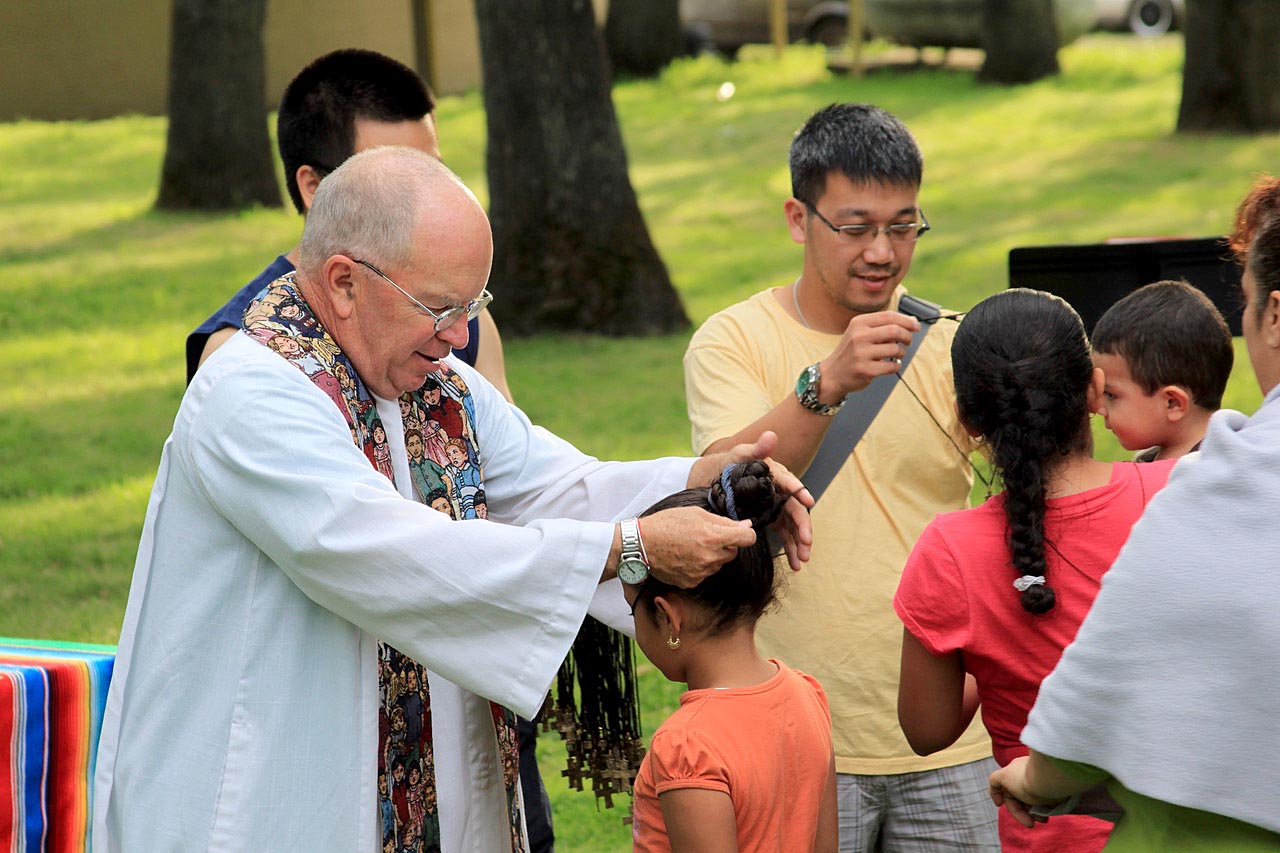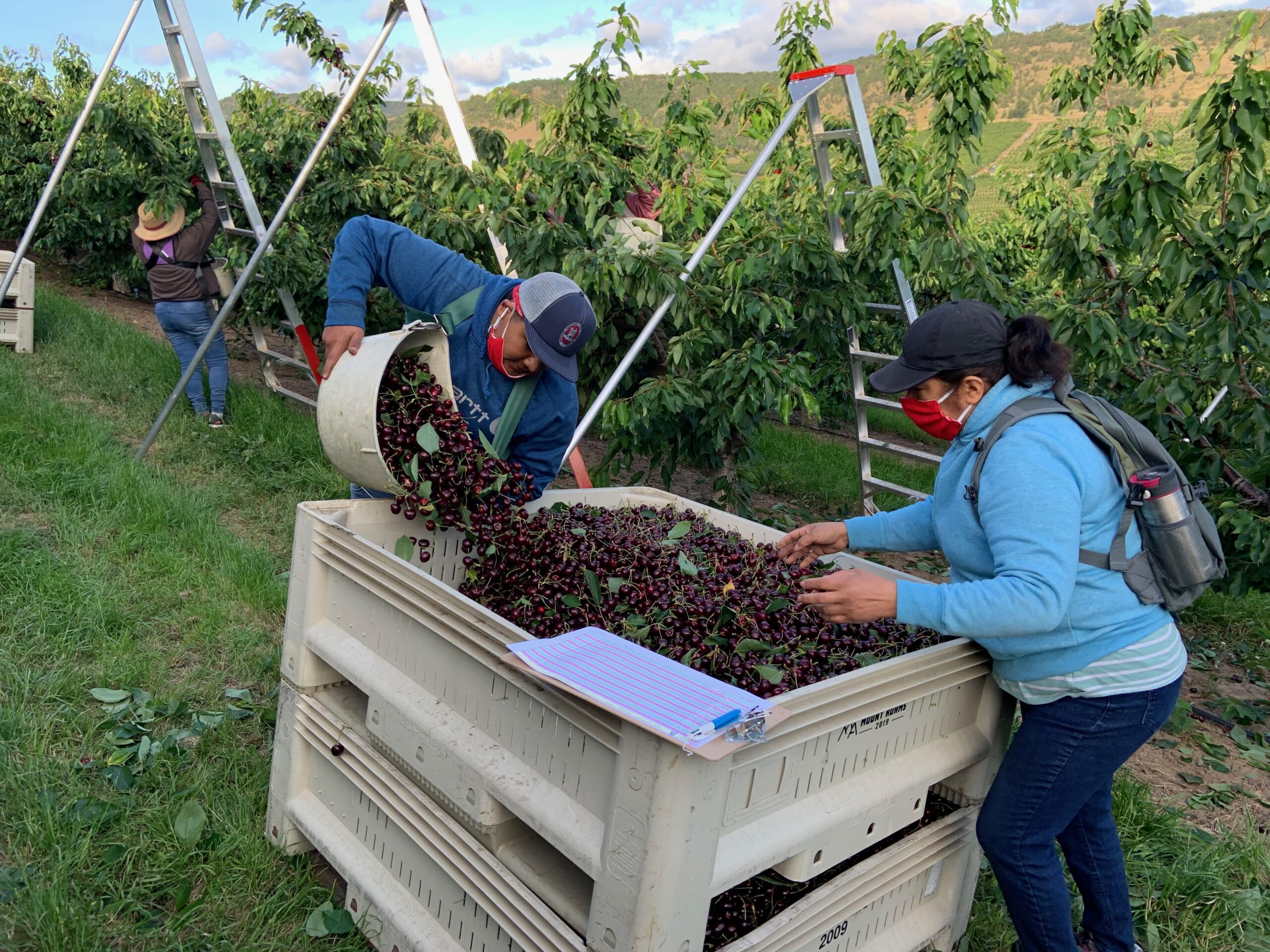CSSR Giving Tuesday #5: St. Alphonsus’ commitment to the poor
A MEDIDA QUE SE ACERCA DE ADVIENTO, LE AGRADECEMOS DE NUEVO POR APOYAR LAS MISIONES REDENTORISTAS
“Porque tuve hambre y me diste de comer …”
Agradecemos a nuestros muchos donantes fieles que apoyan las misiones Redentoristas a los pobres y los más abandonados. Sin sus contribuciones, no podríamos continuar nuestro ministerio de Facebook en línea a Nuestra Madre del Perpetuo Socorro (@PrayForUsMary); no podíamos llevar comida a tantos necesitados, visitar a los enfermos y moribundos, compartir un mensaje de esperanza con tantos jóvenes en los barrios marginales, consolar a muchos que están en duelo y celebrar la misa en regiones remotas de África y América del Sur.
El próximo martes 1 de diciembre es el #GivingTuesday. Por favor, apoye nuestros ministerios basados en la fe ese día.
http://bit.ly/GivingTuesdayRedemptorists
¡GRACIAS!
AS ADVENT APPROACHES WE THANK YOU AGAIN FOR SUPPORTING THE REDEMPTORIST MISSIONS
“For I was hungry and you gave me food…”
We thank our many faithful donors who support the Redemptorist missions to the poor and most abandoned. Without your contributions, we couldn’t continue our online Facebook ministry to Our Mother of Perpetual Help (@PrayForUsMary); we couldn’t deliver meals to so many in need, visit the sick and dying, share a message of hope with so many young people in the inner cities, comfort many who grieve, and celebrate Mass in remote regions of Africa and South America.
Next Tuesday, December 1 is #GivingTuesday. Please support our faith-based ministries on that day.
http://bit.ly/GivingTuesdayRedemptorists
THANK YOU!
El carisma de san Alfonso para servir a los “más abandonados”
Este blog se encuentra en la página de Historia de este sitio web, pero en este momento cuando invitamos a las personas a participar en el “Giving Tuesday”, puede ser útil considerar la fundación de nuestra congregación. San Alfonso fue un sacerdote de Nápoles. Fue conocido como maestra de la Ley, predicador popular, artista, músico y tenía muchos otros dones. Fue un trabajador incansable, tanto que a los 33 años sufrió un colapso físico. Muchos de sus familiares y amigos estaban preocupados por su salud. Fue a la región montañosa de Scala para refrescarse y renovarse. Poco sabía él que iba a experimentar una conversión y un compromiso de llevar la “Buena Nueva” a los pobres. En su conversión, invitó a otros hombres a unirse a él en su deseo de servir a los “más abandonados”.
Los más abandonados, a quienes se envía en particular la Congregación, son aquellos a quienes la Iglesia todavía no ha podido proporcionar medios suficientes de salvación, aquellos que nunca han escuchado el mensaje de la Iglesia, o al menos no lo reciben como el “Buenas Nuevas” y finalmente los que sufren daños por la división en la Iglesia.
—C.SS.R. Constitución 3
En 1732, San Alfonso Liguori, un sacerdote de Nápoles tenía la inquietud de llevar el mensaje de fe a los “más abandonados” del mundo. Ganó fama por su predicación, pero quería llevar la Buena Nueva a los que no oyeron el mensaje de la Iglesia. Observó que los pobres a menudo escuchaban un mensaje duro y temeroso. Reconoció que la gente en áreas rurales carecía un conocimiento rudimentario de su fe. Reunió a otros hombres del mismo espíritu que querían llevar las buenas nuevas a los pobres. La “misión popular” fue el método de evangelización que introdujo la Congregación del Santísimo Redentor en muchas comunidades rurales en el área de Nápoles. Fue el carisma de buscar a los “más abandonados” lo que motivó a los misioneros redentoristas a llevar el espíritu de San Alfonso a todas las naciones del mundo.
de Isaías: “El Espíritu del Señor está sobre mí, porque me ha ungido para traer buenas nuevas a los pobres. Me ha enviado a proclamar la libertad a los cautivos y a recuperar la vista de los ciegos, a liberar a los oprimidos y a proclamar un año aceptable para el Señor “. (Lucas 4: 18-19) Es esta lectura la que siempre está presente en nuestros capítulos, asambleas, ceremonias de profesión de votos de profesión y en toda la planificación de nuestras iniciativas.
La manera de servir a los “más abandonados” toma muchas formas en la historia Redentorista. En la época de San Alfonso, los Redentoristas ofrecieron la “misión popular” en las comunidades rurales de Italia. San Clemente Hoffbauer llevó a los Redentoristas de Italia a Polonia, Alemania y Austria. Era la época de la revolución industrial. Encontró a los más abandonados en los centros de las ciudades con trabajadores en fábricas. Los misioneros en Norteamérica trabajaron con inmigrantes que llegaron de Alemania, Irlanda y Francia.
San Juan Neumann llegó a los Estados Unidos desde Bohemia y fue ordenado para la diócesis de Nueva York en 1836. Después de ingresar a los Redentoristas en 1842, trabajó con inmigrantes alemanes en Baltimore y Pittsburg. Fue Provincial de 1846-49. Su ministerio creció de ser un misionero no solamente a los alemanes a cuidar a personas de muchas naciones y aprendió varios idiomas para servir mejor a inmigrantes de otras naciones. Fue elevado a ser el cuarto obispo de Philadelphia y cuando murió, estaba estudiando gaélico para servir mejor a los inmigrantes irlandeses. En su canonización en 1977, el Papa Pablo VI dijo: “Estaba cerca de los enfermos, le encantaba estar con los pobres, era amigo de los pecadores y ahora es la gloria de todos los emigrantes”.
El beato Francisco Xavier Seelos (1819-1867) emigró a los Estados Unidos desde Bavaria en 1843. Dejando su país, a la edad de 24 años, lleno de celo e idealismo, se unió a un puñado de misioneros Redentoristas en los Estados Unidos. Lo que Francis encontró en los Estados Unidos no fue romántico; una gran población de inmigrantes que viven en la pobreza, la enfermedad, la falta de vivienda y el rechazo. El padre Seelos enfrentó esta desolación con esperanza, no con desesperación. Es un patrón de la pastoral para los migrantes. No los abandonó.
Mientras que los primeros Redentoristas, que llegaron a los Estados Unidos, comenzaron su ministerio con inmigrantes en las comunidades de habla alemana, a medida que se mudaron por todo el país, la comunidad inició ministerios con inmigrantes de todo el mundo, incluyendo los de Asia, América Latina y África. Mientras que los Redentoristas trabajaban con inmigrantes, sus parroquias ordinariamente no eran parroquias “étnicas”. Las parroquias y misiones de los Redentoristas estaban al servicio del Pueblo de Dios desde todas partes.
(Si desea identificar el apoyo para el Ministerio Migrante, utilice la pestaña “Donate” en esta página. Otros ministerios redentoristas están en el enlace “Redentoristas del martes de donaciones” a continuación.)
St. Alphonsus’ charism, to serve the “most abandoned”
This blog is found on the History page of this website, but at this time when we invite people to participate in “Giving Tuesday”, it may be helpful to consider the founding of our congregation. St. Alphonsus was a priest of Naples. He was gifted in many ways in the Law, as a preacher, as an artist, a musician and many other gifts. He was also a tireless worker, so much so that at age 33 he had a physical breakdown. Many of his family and friends worried about his health. He went to the hill country of Scala to refresh and renew himself. Little did he know that he was to experience a conversion and a commitment to bring the “Good News” to the poor. In his conversion, he invited other men to join him in his desire to serve the “most abandoned.”
The most abandoned, to whom in particular the Congregation is sent, are those for whom the Church has not yet been able to provide sufficient means of salvation, those who have never heard the Church’s message, or at least do not receive it as the “Good News” and finally those who suffer harm because of division in the Church.
—C.SS.R. Constitution 3
In 1732, St. Alphonsus Liguori, a priest of Naples had a burning desire to bring the message of faith to the “most abandoned” of the world. He gained fame for his preaching, but he wanted to go beyond preaching to those who already believed. He observed that the poor often heard a message that was harsh and fearful. He recognized that those in rural areas lacked even a rudimentary knowledge of their faith. He gathered other men of like spirit who wanted to bring the good news to the poor. The “popular mission” was the method of evangelization that introduced the Congregation of the Most Holy Redeemer to many rural communities in the area of Naples. It was the charism of seeking out the “most abandoned” that motivated Redemptorist missionaries to take the spirit of St. Alphonsus to all nations of the world.
Redemptorists, considering our Constitution 3, hear Jesus reading the passage from Isaiah, “The Spirit of the Lord is upon me, because he has anointed me to bring glad tidings to the poor. He has sent me to proclaim liberty to captives and recovery of sight to the blind, to let the oppressed go free, and to proclaim a year acceptable to the Lord.” (Lk. 4:18-19) It is this reading that is always present in our chapters, assemblies, profession ceremonies and in all of our mission planning.
The ways of serving the “most abandoned” take on many forms in our Redemptorist history. In the time of St. Alphonsus, Redemptorists served by offering the “popular mission” in rural communities of Italy. St. Clement Hoffbauer took the Redemptorists out of Italy into Poland, Germany and Austria. It was the time of the industrial revolution and he found the most abandoned in the hearts of cities with workers in foundries and factories. Missionaries to North America worked with immigrants arriving from Germany, France and Ireland.
St. John Neumann arrived in the United States from Bohemia and was ordained for the diocese of New York in 1836. After entering the Redemptorists in 1842, he worked with German immigrants in Baltimore and Pittsburg. He was Provincial from 1846-49. His ministry grew from being a missionary for German immigrants to caring for people of many nations and he learned several languages to better serve other immigrants. He became the fourth bishop of Philadelphia and when he died, he was learning Gaelic to better serve the Irish immigrants. At his canonization in 1977, Pope Paul VI said, “He was close to the sick, he loved to be with the poor, he was a friend of sinners, and now he is the glory of all emigrants.”
Blessed Francis Xavier Seelos (1819-1867) immigrated to the United States from Bavaria in 1843. Leaving his country, at the age of 24, filled with courage and idealism, he joined a handful of Redemptorist missionaries in the United States. What Francis found in America was not romantic at all: a huge population of immigrants living in poverty, sickness, homelessness, and rejection. Father Seelos faced this desolation with hope, not despair. He is a patron for pastoral care for migrants. He did not abandon them.
While the first Redemptorists, who came to the United States, began their immigrant ministry in German speaking communities, as they moved across the country, the community engaged in ministries with immigrants from all over the world including Asia, Latin America, and Africa. While Redemptorists worked with immigrants, their parishes were not “ethnic” parishes. Redemptorists parishes and missions were at the service of People of God from everywhere
(If you would like to identify support for Migrant Ministry, please use the “Donate” tab on this page. Other Redemptorist ministries are under the “Redemptorist Donation Tuesday” link below.)



